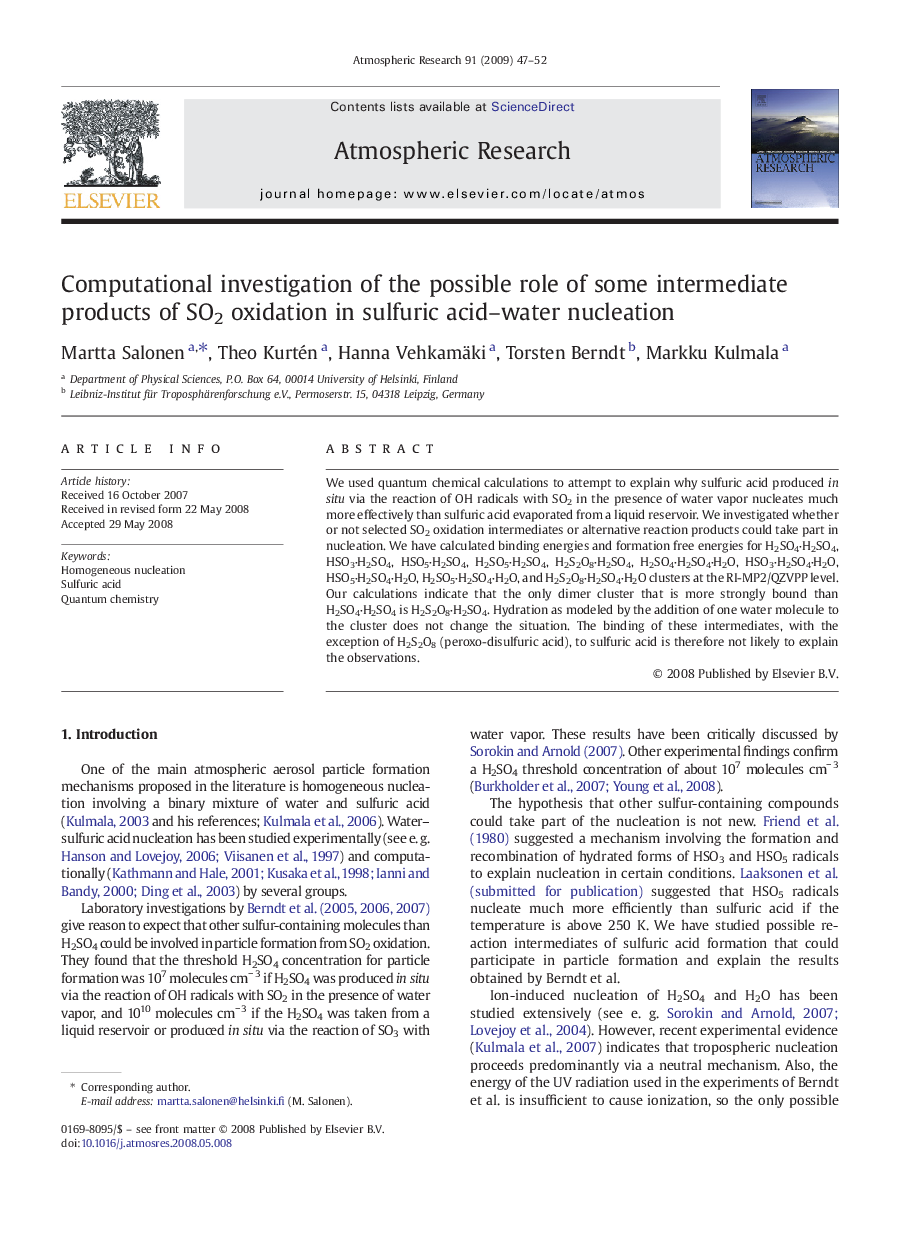| Article ID | Journal | Published Year | Pages | File Type |
|---|---|---|---|---|
| 4451068 | Atmospheric Research | 2009 | 6 Pages |
We used quantum chemical calculations to attempt to explain why sulfuric acid produced in situ via the reaction of OH radicals with SO2 in the presence of water vapor nucleates much more effectively than sulfuric acid evaporated from a liquid reservoir. We investigated whether or not selected SO2 oxidation intermediates or alternative reaction products could take part in nucleation. We have calculated binding energies and formation free energies for H2SO4·H2SO4, HSO3·H2SO4, HSO5·H2SO4, H2SO5·H2SO4, H2S2O8·H2SO4, H2SO4·H2SO4·H2O, HSO3·H2SO4·H2O, HSO5·H2SO4·H2O, H2SO5·H2SO4·H2O, and H2S2O8·H2SO4·H2O clusters at the RI-MP2/QZVPP level. Our calculations indicate that the only dimer cluster that is more strongly bound than H2SO4·H2SO4 is H2S2O8·H2SO4. Hydration as modeled by the addition of one water molecule to the cluster does not change the situation. The binding of these intermediates, with the exception of H2S2O8 (peroxo-disulfuric acid), to sulfuric acid is therefore not likely to explain the observations.
